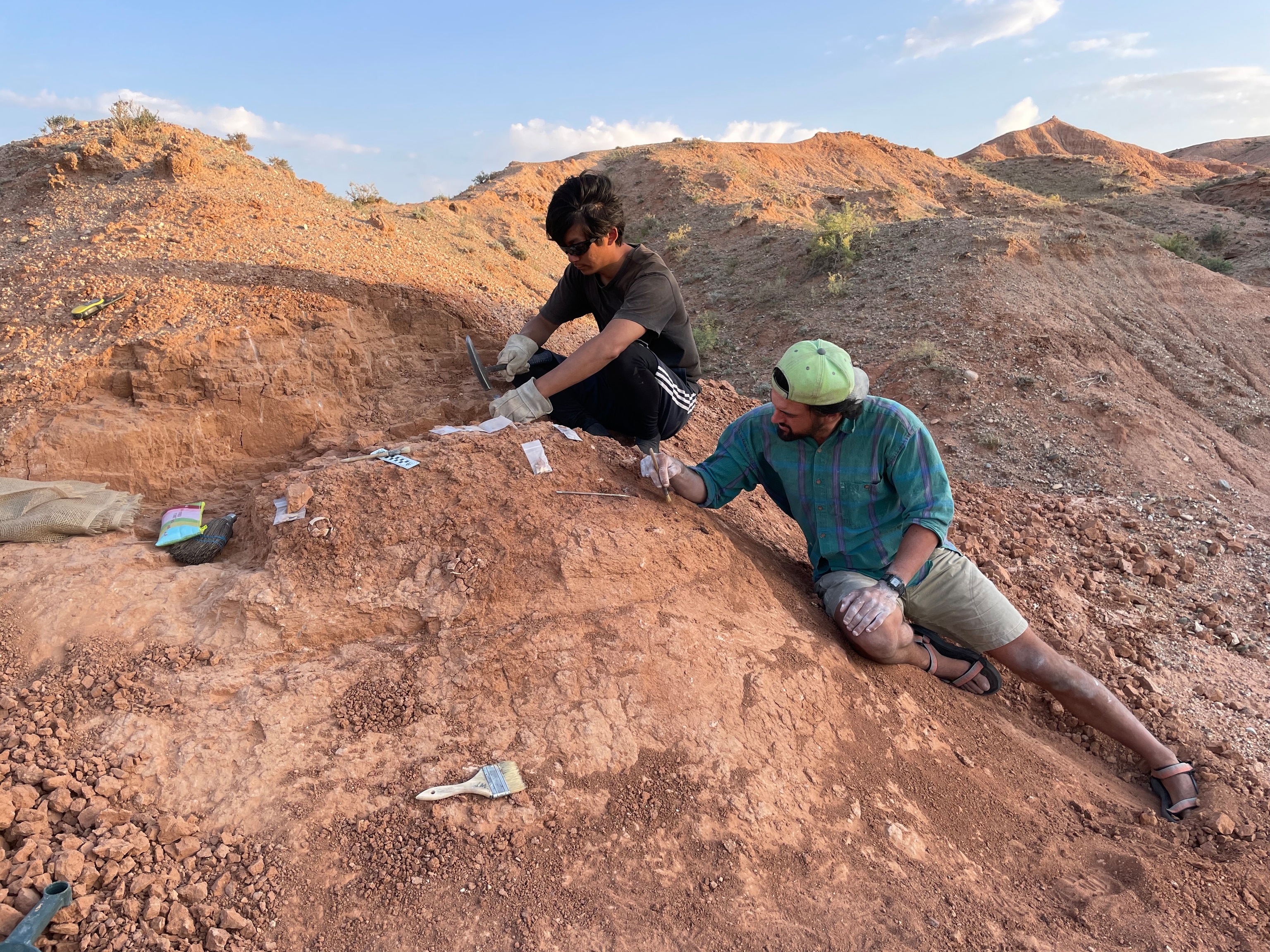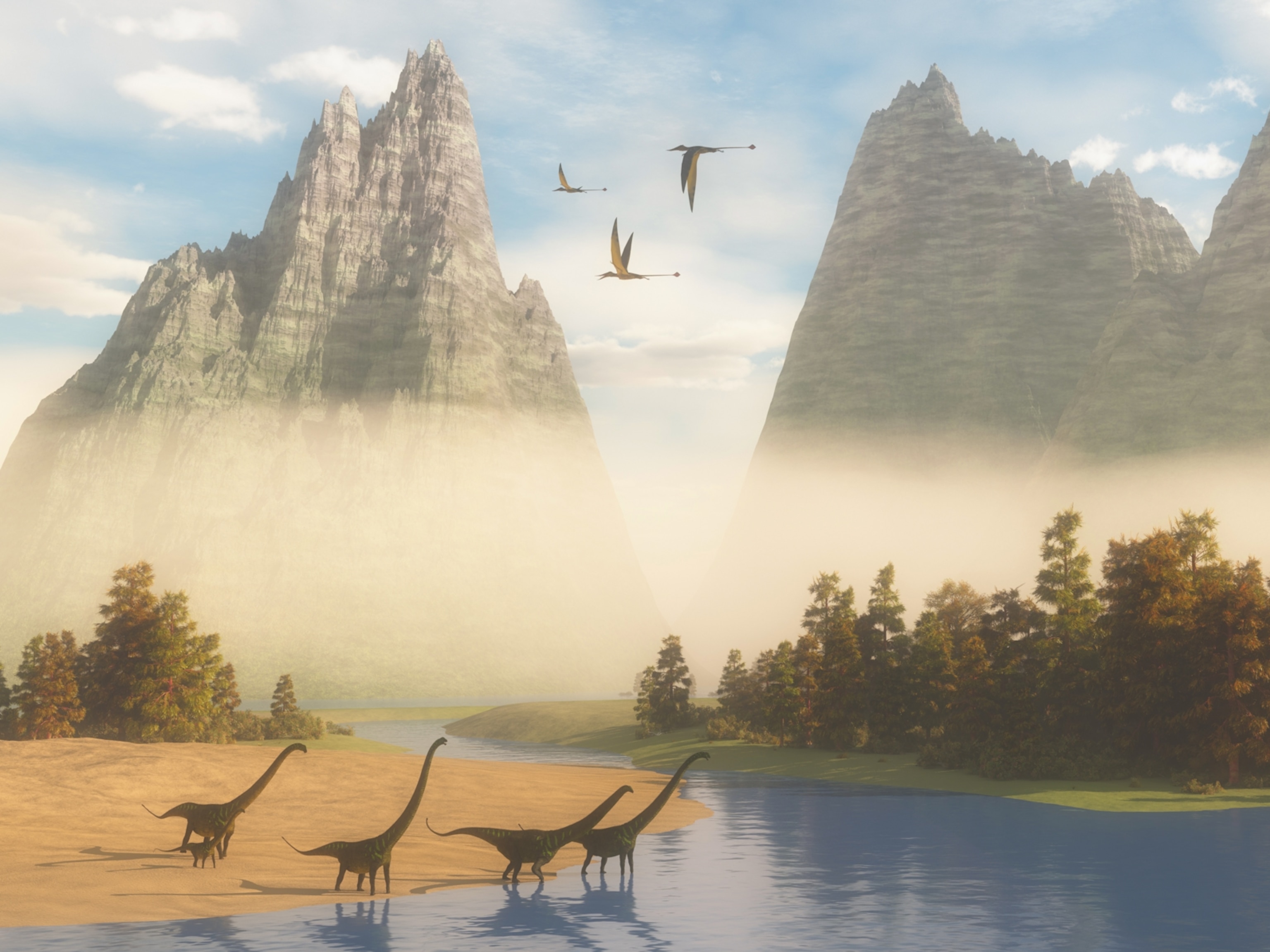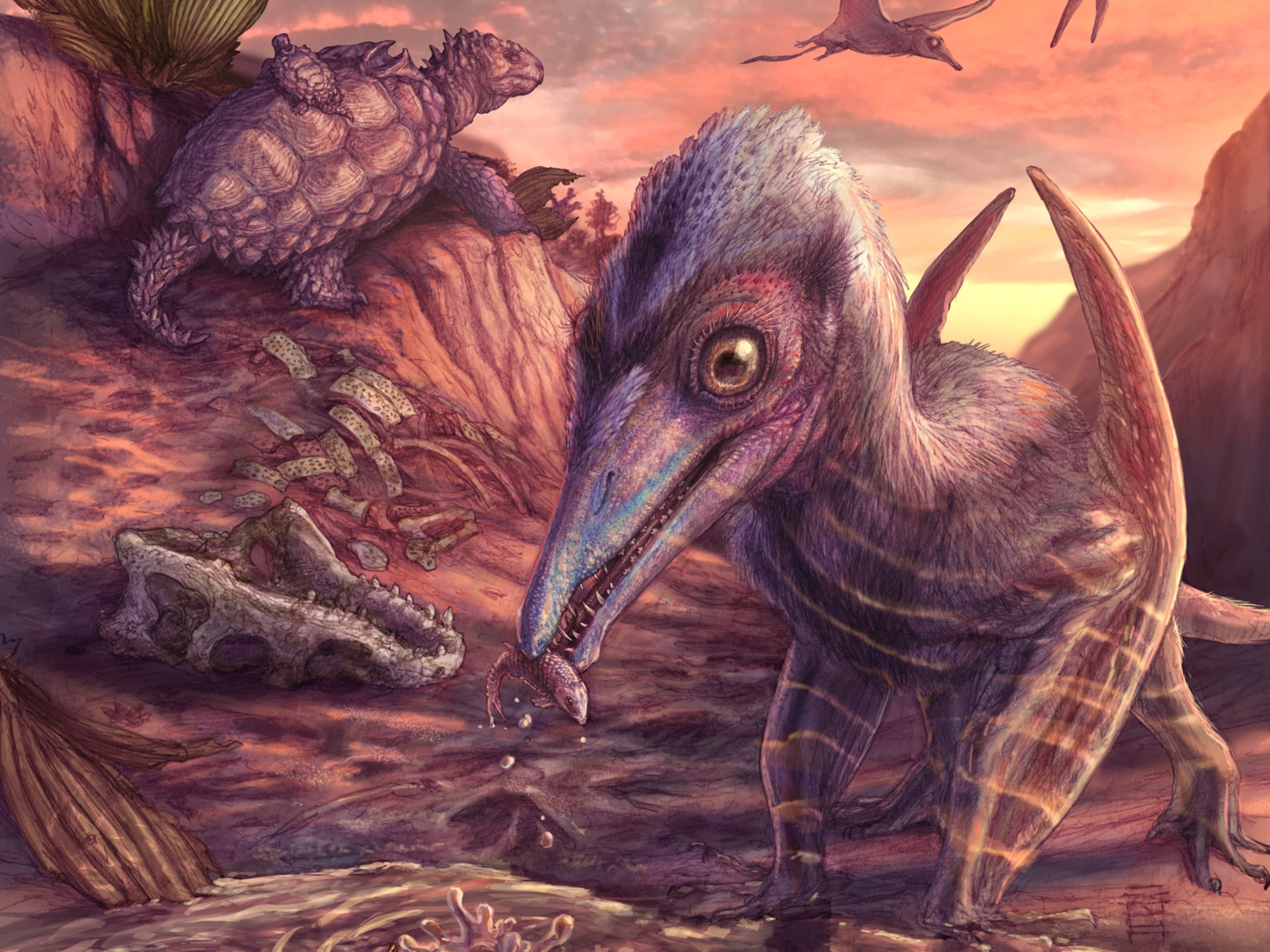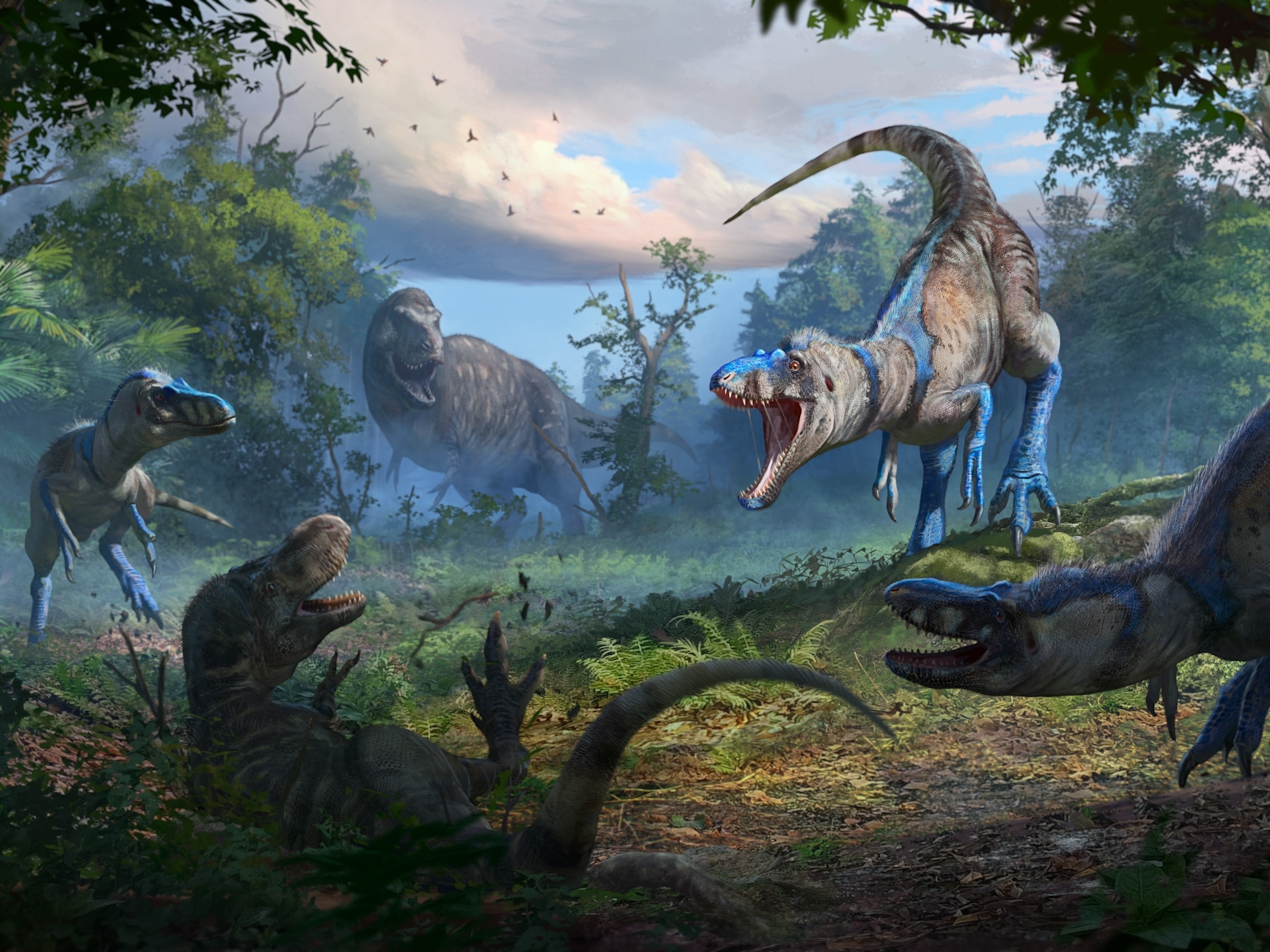During the Ordovician period, part of the Paleozoic era, a rich variety of marine life flourished in the vast seas and the first primitive plants began to appear on land—before the second largest mass extinction of all time ended the period.
Most of the world's landmasses came together to create the supercontinent of Gondwana, which included the continents of Africa, South America, Antarctica, and Australia. Gondwana drifted south throughout the period, finally settling on the South Pole. The landmass that would become North America was combined into the supercontinent of Laurentia, which was separated from Gondwana by the narrow Iapitus Ocean. Proto-North America straddled the Equator, though to begin with it lay largely underwater.
For the most part the Earth's climate was warm and wet, with sea levels rising as much as 1,970 feet (600 meters) above those of today. But once Gondwana took up its polar position in the late Ordovician, massive glaciers formed over Africa at the supercontinent's center. This heralded a 20-million-year ice age during which shallow, life-rich seas shrank away.
Teeming Seas
Life at the start of the Ordovician remained confined to the seas with new animals evolving in place of those that didn't survive the Cambrian. Chief among them were the squidlike nautiloids, a type of tentacled mollusk. The nautiloids lifted off from life on the seabed as gas-filled chambers in their conical shells made them buoyant. They were accomplished swimmers, propelling themselves by jetting water through their body cavity. Equipped with grasping tentacles, the nautiloids were effective predators.
Another group of marine hunters were the mysterious conodonts, known mainly from the tiny fossil teeth they left behind. The few complete fossils that have been found suggest they were finned, eel-like creatures with large eyes for locating prey. The conodonts are now thought to have been true vertebrates; however, this line of backboned animals later went extinct.
Fish started becoming more widespread in the fossil record. They were small and had downward-pointing, jawless mouths, indicating they lived by sucking and filtering food from the seabed. Bony shields covered the front of their bodies—the beginnings of a fashion for armor plating among fish. Lampreys and hagfish are these fishes' living descendants.
The archaic sponge reef-dwellers of the Cambrian gave way to bryozoans—tiny, group-living animals that built coral-like structures. Ordovician reefs were also home to large sea lilies, relatives of sea stars. Anchored to the bottom inside calcareous tubes, they collected food particles with feathery arms that waved in the ocean currents.
From Sea to Land
The hard-bodied arthropods started eyeing opportunities on land. Edging into freshwater and shallow lagoons, they likely included horseshoe crabs, which, despite their name, are more closely related to spiders and scorpions. A few species of these "living fossils" still survive today, such as along the eastern seaboard of the United States, where each spring horseshoe crabs crawl ashore to spawn.
There is also evidence that the first primitive plants began to appear on the previously barren land.
These first steps toward life on land were cut short by the freezing conditions that gripped the planet toward the end of the Ordovician. This resulted in the second largest mass extinction of all time, wiping out at least half of all marine animal species about 443 million years ago.





